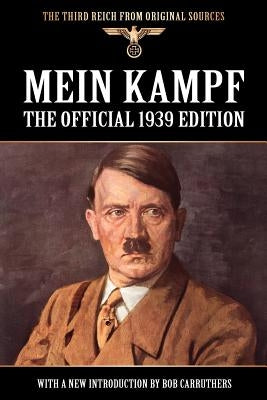The History of the Book

Books are more than just pages bound together; they are vessels of human knowledge, culture, and imagination. The history of the book is a fascinating journey that spans thousands of years, reflecting the evolution of human communication, technology, and society. From ancient clay tablets to modern e-books, the story of the book is a testament to humanity’s enduring desire to share information and tell stories.
1. Ancient Beginnings: The Dawn of Written Communication

The earliest forms of written communication date back to around 3500 BCE in Mesopotamia. The Sumerians used clay tablets and a stylus to inscribe cuneiform script. These tablets recorded transactions, laws, and stories, laying the groundwork for written literature.
Meanwhile, in Egypt, the use of papyrus began around 3000 BCE. Papyrus, made from the papyrus plant, was lighter and more portable than clay tablets. This innovation allowed for the creation of scrolls, which were used for religious texts, administrative records, and literary works.
2. The Classical Era: Codices and Scrolls

By the time of the Greek and Roman civilizations, books had evolved significantly. The Greeks continued to use papyrus scrolls, but they also experimented with parchment, a more durable material made from animal skins. The Romans popularized the codex, a precursor to the modern book, which featured pages bound together along one edge. The codex was more practical than scrolls, allowing for easier reading and portability.
In this era, libraries became cultural centers. The Library of Alexandria, founded in the 3rd century BCE, was the most famous, housing hundreds of thousands of scrolls and codices. These collections were invaluable for preserving knowledge and advancing learning.
3. The Middle Ages: Manuscripts and Monastic Scribes

During the Middle Ages, books were primarily produced by hand in monasteries. Monks, dedicated to preserving religious texts, painstakingly copied manuscripts on parchment or vellum. These manuscripts were often illuminated with intricate designs and illustrations, making them works of art as well as literary treasures.
The production of books during this time was labor-intensive and costly, making them valuable and rare. Universities, which began to emerge in the 12th century, played a significant role in the dissemination of books. The need for textbooks and scholarly works spurred the growth of book production.
4. The Printing Revolution: Gutenberg and Movable Type

The invention of the printing press by Johannes Gutenberg in the mid-15th century revolutionized the production of books. Gutenberg's press used movable type, which allowed for the mass production of texts. This breakthrough drastically reduced the cost of books and made them more accessible to a broader audience.
The first major book printed using Gutenberg's press was the Gutenberg Bible, completed around 1455. This event marked the beginning of the Printing Revolution, which facilitated the spread of knowledge and ideas throughout Europe. The printing press played a crucial role in the Renaissance, Reformation, and the Scientific Revolution by enabling the widespread distribution of new ideas.
5. The Modern Era: Industrialization and Mass Production

The 19th century brought further advancements in book production with the advent of industrialization. The steam-powered printing press, developed in the early 1800s, significantly increased the speed and volume of book production. This period also saw the introduction of cheaper paper made from wood pulp, which further reduced costs.
These technological advancements democratized reading, making books available to a much wider audience. Public libraries became more common, and literacy rates soared. The proliferation of novels and periodicals catered to the growing demand for entertainment and information.
6. The Digital Age: E-books and the Internet

The late 20th and early 21st centuries have witnessed another transformation in the history of the book with the rise of digital technology. The development of the internet and electronic devices has given birth to e-books, which offer readers the convenience of accessing thousands of titles on a single device.
E-books and digital publishing have revolutionized the way we read and distribute books. Online platforms like Amazon have made it easier for authors to self-publish, bypassing traditional gatekeepers of the publishing industry. This shift has democratized the process of bringing books to market, allowing a more diverse array of voices to be heard.
7. The Future of Books: Blending Tradition with Innovation

As we look to the future, the history of the book is far from over. While digital formats continue to grow in popularity, there remains a strong appreciation for physical books. The tactile experience of holding a book, the smell of the pages, and the visual appeal of a well-designed cover are irreplaceable for many readers.
Innovations like augmented reality (AR) and virtual reality (VR) promise to further enhance the reading experience. Interactive e-books that incorporate multimedia elements are already blurring the lines between books and other forms of media. These technologies have the potential to create immersive storytelling experiences that were previously unimaginable.
Moreover, the environmental impact of book production is becoming an important consideration. Sustainable practices in paper production and printing, as well as the rise of digital alternatives, are shaping the future of the book industry.
The history of the book is a rich tapestry that reflects human ingenuity and the enduring power of the written word. From ancient clay tablets to digital e-books, the evolution of books mirrors the progress of civilization itself. As we move forward, the book will continue to adapt and thrive, blending tradition with innovation to meet the changing needs of readers around the world.
By understanding the past, we can appreciate the remarkable journey of the book and look forward to the new chapters that lie ahead. Whether in print or digital form, books remain a cornerstone of human culture, education, and imagination, continuing to inspire and inform future generations.
Explore your favourite book at your own online bookstore.
Happy Reading!








